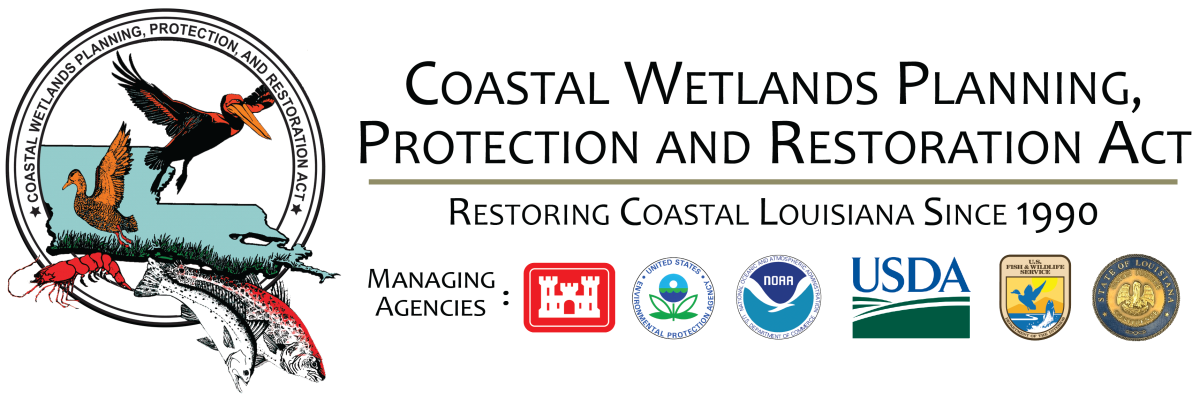Vanishing wetlands pose a threat to species who reside in these unique habitats for all or part of their life cycle. Population decline can be caused by a variety of threats, including invasive species competition, habitat loss, and overharvesting or over-predation. There are species who rely heavily on constant or predictable conditions in specific parts of the year such as seasonal rainfall, temperature cycles, and sometimes other species who migrate for part of the year. Populations subjected to too much stress for an extended period often experience population decline as well. In some cases, those species become threatened, endangered, or even extinct.
CWPPRA and U.S. Fish and Wildlife Service will celebrate and observe Endangered Species Day on May 17th, 2019, to celebrate and highlight the species and habitat protection efforts throughout the coast. Louisiana is home to 11 endangered species, including three species of bivalve mollusks, three species of sea turtle, two species of birds, two plants, and one fish. Of these, every single one is reliant on wetlands. All three bivalves (fat pocketbook, pink mucket, and tan riffleshell) are freshwater filter feeders who live in flowing water. They clean pollutants from the water before it reaches our coastline, improving water quality for our coastal residents. Sea turtles are among the most popular sea creatures and they rely on our coast for their nesting grounds. Leatherback (largest, deepest-diving, and most migratory), hawksbill (thickest scutes/shells), and Kemp’s ridley (smallest and rarest) feed on different creatures, but they seem to all agree on jellyfish. The two bird species on the list are the interior least tern and the red-cockaded woodpecker. Terns are fishing birds that enjoy the banks of the Mississippi River, whereas the woodpeckers utilize the upland hardwood forest ecosystems of northern Louisiana. The two plants are American chaffseed and Louisiana quillwort. Chaffseed is a semiparasite that relies on fire to proliferate in longleaf pine forests. Louisiana quillwort is a semiaquatic graminoid (grass-like plant that spends some time underwater). The lone fish species, the Pallid Sturgeon, is a ray-finned, bottom-feeding, freshwater fish that can live up to a century. They like the turbid waters of the Mississippi River and its distributaries.
Clearly, these 11 native species have adapted to Louisiana’s dynamic landscape and they each fill a different niche within their respective habitats, so a one-size-fits-all solution does not exist for their preservation. CWPPRA funds projects that help maintain or restore vital habitat for these species and the other species they rely on for food. If a species goes locally extinct, it can have a ripple effect that throws off pre-established balances throughout the ecosystem. Coastal protection has an extensive impact, protecting areas further upstream as well, so CWPPRA indirectly eases pressure on the inland species. Endangered species are one of many reasons our coast deserves to be restored and protected.
For more information about these species and other threatened and endangered species, visit the US Fish and Wildlife Service’s website: https://www.fws.gov/endangered/.
The featured image is from https://www.nature.org/en-us/explore/animals-we-protect/leatherback-sea-turtle/






















